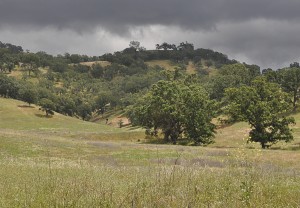
Rarely, one comes to a novel from watching a movie based on it. Even more rarely does a very faithful movie – a superb film – lead to surprises and pleasures no film can capture except by quoting the novel – which it does.
J.L. Carr’s A Month in the Country (1980)[1] is just such a book, and ‘A Month in the Country’ (1987) is just such a film. Only John Huston’s loving adaptation of James Joyce’s ‘The Dead’ is comparable.[2]
As in ‘The Dead’, the big action occurs off stage.
A shell-shocked soldier returns from WW I to find his marriage over. A chance encounter leads to a month’s work in Yorkshire restoring a painting in a medieval church. The picture proves a mysterious masterpiece.
The narrator, the veteran, tells his story in what seems a relaxed, discursive manner. It’s only on reflection one realises how tautly balanced the prose really is. Here’s the narrator setting the stage for his task in the church:
Medieval wall-paintings keep to a well-thumbed catalogue. There are the three voluptuaries displayed in jolly dissipation, than racked in hellish torment; there is Christopher wading through fishes and mermaids with the Christ-child on his shoulder; there are those boring female saints stoically enduring wheel, rack and sword-slicing (these fitted conveniently along aisle walls or above the nave arcade). But the big spread of wall between chancel arch and roof timbers almost always got the Big Treatment – a Judgment.[3]
Almost of necessity, the movie loses the gentle ironies of the book. It also loses until its end the constant reinforcement that the narrator is describing distant memories through the miasma of sixty years. The quoted paragraph a man full of years would write, not a young man in the moment.
In his introduction to the New York Review Books edition, Michael Holroyd suggests the narrator is not altogether reliable. Nowhere does that seem clearer than in the final paragraphs when he writes,
Then (and I can’t explain it) the numbness went and I knew that, whatever else had befallen me during those few weeks in the country, I had lived with a very great artist….[4]
Not the revelation of his self-worth, of the kindness of strangers not of your class, of the stirrings of love for another man’s wife…. What an ironic thud that is! Of one thing the reader is certain, the numbness earned at Passchendaele left only room to feel regret at what he’d lost, failed to grasp.
The last three paragraphs shorn of irony and distance are unforgettable, as good as anything I’ve ever read anywhere.[5] I won’t quote them in the hopes you’ll read them yourself. And, you should.
NOTES
1. I recommend the NYRB Classics edition which like all in the series is beautifully printed. It is well-introduced by Michael Holroyd whose picture of J.L. Carr is almost as elegiac – though quite funny in places – as the book itself.
2. The contrasts between A Month and ‘The Dead’ are as haunting as the works themselves. Until today it had never occurred to me to read them together, but they should be.
3. J.L. Carr, A Month in the Country [1980] (New York: New York Review Books, 2000), p. 32.
4. Id., pp. 134-35.
5. Id., p. 135.
Recent Comments